Saturday, 2 June 2012
Thursday, 31 May 2012
Wednesday, 30 May 2012
kellermann's victory by mokarex
In 1789 Kellermann enthusiastically embraced the cause of the French Revolution, and in 1791 became general of the army in Alsace. In April 1792 he was made a lieutenant-general, and in August of the same year there came to him the opportunity of his lifetime. He rose to the occasion, and his victory over the Prussians at the Battle of Valmy, in Goethe's words, "opened a new era in the history of the world". Napoleon later commented that: "I think I'm the boldest general that ever lived, but I daren't take post on that ridge with windmill at Valmy (where Kellermann took position) in 1793."
Transferred to the army on the Moselle, Kellermann was accused by General Custine of neglecting to support his operations on the Rhine; but he was acquitted at the bar of the National Convention in Paris, and placed at the head of the army of the Alps and of Italy, in which position he showed himself a careful commander and excellent administrator.
Shortly afterwards he received instructions to reduce Lyon, then in revolt against the Convention, but shortly after the surrender he was imprisoned in Paris for thirteen months. Once more honourably acquitted, he was reinstated in his command, and did good service in maintaining the south-eastern border against the Austrians until his army was merged into that of General Bonaparte in Italy.
Monday, 28 May 2012
Sunday, 27 May 2012
they were expendable
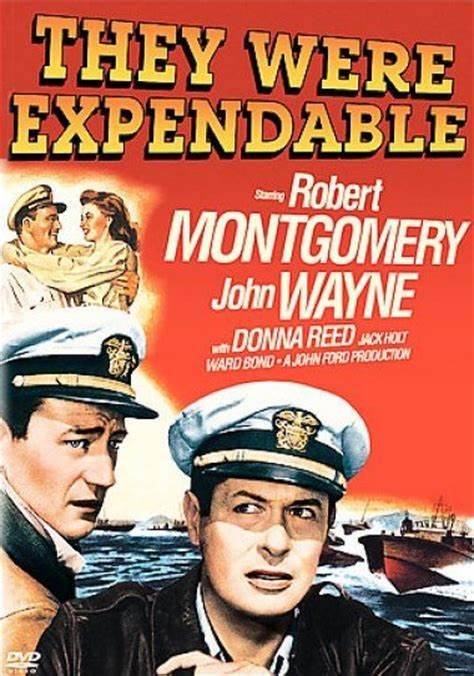 They Were Expendable is a 1945 American war film directed by John Ford and starring Robert Montgomery
They Were Expendable is a 1945 American war film directed by John Ford and starring Robert Montgomery  and John Wayne and featuring Donna Reed.
and John Wayne and featuring Donna Reed. The film is based on the book by William L. White, relating the story of the exploits of Motor Torpedo Boat
The film is based on the book by William L. White, relating the story of the exploits of Motor Torpedo Boat  unit defending the Philippines against Japanese invasion
unit defending the Philippines against Japanese invasion during the Battle of the Philippines .photo from
during the Battle of the Philippines .photo from WWII Plastic Toy Soldiers check it out its very good
 (1941–42) inWorld War II. It features the unit's commanding officer and Medal of Honor recipient Lieutenant John D. Bulkeley,
(1941–42) inWorld War II. It features the unit's commanding officer and Medal of Honor recipient Lieutenant John D. Bulkeley, and Lieutenant (j.g.)Robert Kelly, one of his boat skippers.
and Lieutenant (j.g.)Robert Kelly, one of his boat skippers.
Lost Boundariesanother book by white is interesting it is also a film released in 1949. It was directed by Alfred L. Werker and stars Beatrice Pearson, Mel Ferrer (in his first starring role), and Susan Douglas Rubes.
 The film is based on the book by William Lindsay White, relating the true story of Dr. Albert Chandler Johnston, a graduate of Rush Medical College whose family passed for white while living in New Hampshire. The movie won the 1949 Cannes Film Festival award for Best Screenplay
The film is based on the book by William Lindsay White, relating the true story of Dr. Albert Chandler Johnston, a graduate of Rush Medical College whose family passed for white while living in New Hampshire. The movie won the 1949 Cannes Film Festival award for Best Screenplay
The characters of John Brickley (Montgomery) and Rusty Ryan (Wayne) are fictionalizations of the actual subjects. Both the film and the book – which was a best seller and had excerpts published in Reader's Digest and Life– depict actions which did not occur, but were believed to be real during the war; the film is noted for its verisimilitude.A demonstration of the capabilities of PT boats is shown in Manila Bay, Philippines 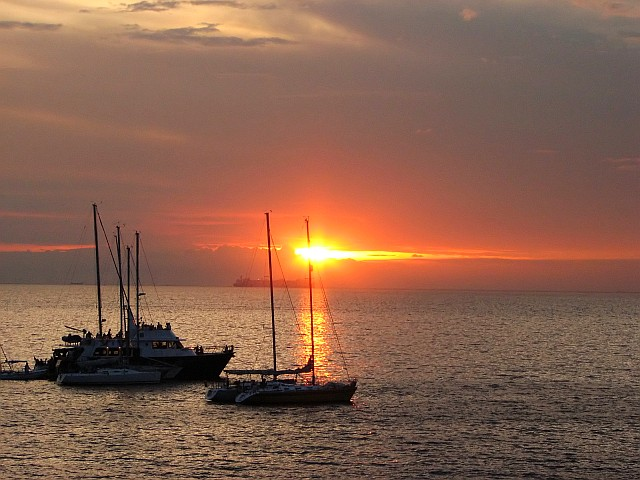 in December 1941. Lt.j.g. 'Rusty' Ryan (John Wayne) becomes disgusted when his superiors refuse to see the small boats as viable naval craft and is in the process of writing his request for a transfer to destroyers when news arrives of the Japanese attack on Pearl Harbor.
in December 1941. Lt.j.g. 'Rusty' Ryan (John Wayne) becomes disgusted when his superiors refuse to see the small boats as viable naval craft and is in the process of writing his request for a transfer to destroyers when news arrives of the Japanese attack on Pearl Harbor.
Ryan and Lt. John Brickley's (Robert Montgomery) demands for combat assignments for their squadron are frustrated for a time, but they are eventually allowed to show their capabilities. From there on, there are mostly 'action' scenes, with the exception of Ryan's romantic interludes with Army nurse Sandy Davyss (Donna Reed). With the mounting Japanese onslaught against the doomed American garrisons at Bataan and Corregidor, the squadron is sent to evacuate General Douglas MacArthur, his family, and a party ofVIPs.
This done, they resume their attacks against the Japanese, who gradually whittle down the squadron. As boats are lost, their crews are sent to fight as infantry. Finally, the last boat is turned over to the Army for messenger duty. Brickley, Ryan and two ensigns are airlifted out on one of the last planes because the PT boats have proved their worth and they are needed stateside to train replacement PT boat officers and crews. The remaining enlisted men, led by Chief Mulcahey, are left behind to continue the fight with remnants of the U.S. Army and Filipino guerillas.According to Ben Mankiewicz, a host of Turner Classic Movies, Ford, a well-known taskmaster, was especially hard on Wayne, who did not serve in the armed forces, during filming. When Ford had health problems, he turned to Montgomery – who had actually commanded a PT boat – to take over for him, rather than Wayne. Montgomery did so well, he was directing in his own right within a couple of years.
The film received extensive support from the Navy Department and it was shot on location on Key Biscayne, Florida,an

d the Florida Keys, since this region most closely approximated the South Pacific war zone. Actual U.S. Navy 80-foot Elco PT Boats were used throughout the filming, albeit remarked with false hull numbers that would have been in use in late 1941 and early 1942. Additional U.S. naval aircraft from nearby naval air stations were temporarily remarked and were used to simulate Japanese aircraft in the film. 

Harry Cohn, head of Columbia Pictures, accused John Wayne of taking a pass at Cohn's girlfriend and told executives at other studios that Wayne was a womanizer, troublemaker, and showed up for work drunk. Wayne never accepted another role from Columbia, even when the studio bought a script specifically for Wayne to star in years later. His breakout role came when Ford cast him in Stagecoach in 1939. From that until The Shootist in 1976 he played the lead in about 140 films. There is some dispute about his lack of service in World War II; the studio opposed his entering the service, but he did tour to appear for the troops and did some undercover work for the OSS.His favorite drink was Sauza Commemorativo Tequila, and often served it with ice that he had chipped from an iceberg during one of his voyages on his yacht, The Wild Goose.
and often served it with ice that he had chipped from an iceberg during one of his voyages on his yacht, The Wild Goose.
 and often served it with ice that he had chipped from an iceberg during one of his voyages on his yacht, The Wild Goose.
and often served it with ice that he had chipped from an iceberg during one of his voyages on his yacht, The Wild Goose.Wayne loved sultry latins too and married some , he appears to have been no coward either even though he didnt get shot at in ww2.The evening before a shoot he was trying to get some sleep in a Las Vegas hotel. The suite directly below his was that of Frank Sinatra (never a good friend of Wayne), who was having a party. The noise kept Wayne awake, and each time he made a complaining phone call it quieted temporarily but each time eventually grew louder. Wayne at last appeared at Sinatra's door and told Frank to stop the noise. A Sinatra bodyguard of Wayne's size approached saying, Nobody talks to Mr. Sinatra that way. Wayne looked at the man, turned as though to leave, then backhanded the bodyguard, who fell to the floor, where Wayne knocked him out by crashing a chair on top of him. The party noise stopped.

THE BATTLES OF THE WARS OF THE ROSES IN LONDON
 The kingdom was mostly ungoverned while the two factions gathered adherents and prepared for major warfare. Riots took place in the streets of London and trade
The kingdom was mostly ungoverned while the two factions gathered adherents and prepared for major warfare. Riots took place in the streets of London and trade --especially the valuable trade in wool with Holland--
--especially the valuable trade in wool with Holland-- The citizens of London, favouring the Yorkists, refused to contribute soldiers or money to the cause of defending against an invasion.
The citizens of London, favouring the Yorkists, refused to contribute soldiers or money to the cause of defending against an invasion.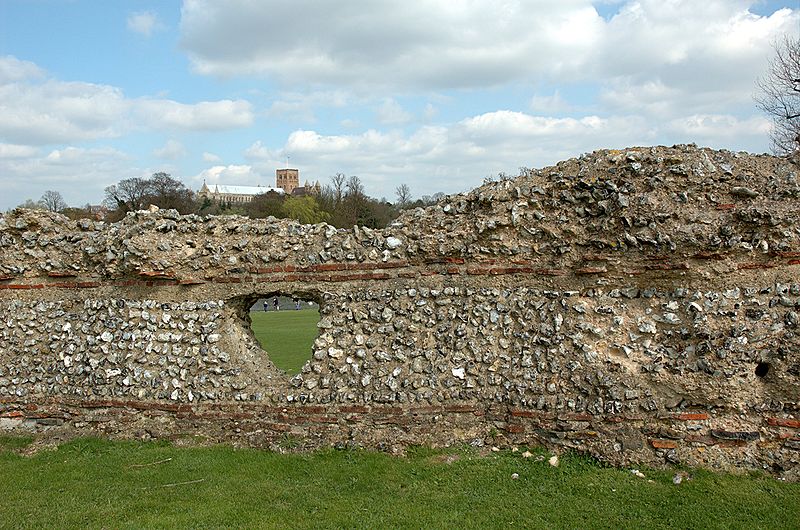 The Wars of the Roses were intermittent civil wars fought by members of the House of Lancaster and the House of York. Both houses were branches of the Plantagenet royal house, tracing their descent from King Edward III.
The Wars of the Roses were intermittent civil wars fought by members of the House of Lancaster and the House of York. Both houses were branches of the Plantagenet royal house, tracing their descent from King Edward III.
What was the cause of the Wars of the Roses?

The rivalry between the house of York and the House of Lancaster started when King Richard II was overthrown by his cousin, Henry Bolingbroke, Duke of Lancaster, in 1399. But the Wars of the Roses actually began on May 22, 1455 with First Battle of St Albans when Richard, Duke of York and his ally, Richard, Earl of Warwick defeated the Lancastrians under Edmund Beaufort who was killed. York captured Henry VI.The Lancastrian army of 2,000 troops arrived at St Albans first, and proceeded to defend it by placing troops along the Tonman Ditch
But the Wars of the Roses actually began on May 22, 1455 with First Battle of St Albans when Richard, Duke of York and his ally, Richard, Earl of Warwick defeated the Lancastrians under Edmund Beaufort who was killed. York captured Henry VI.The Lancastrian army of 2,000 troops arrived at St Albans first, and proceeded to defend it by placing troops along the Tonman Ditch  and at the bars in Sopwell Lane
and at the bars in Sopwell Lane
 and Shropshire Lane
and Shropshire Lane
. The 3,000-strong Yorkist army arrived and camped in Keyfield to the east. Lengthy negotiations ensued with heralds moving back and forth between the rival commanders
The 3,000-strong Yorkist army arrived and camped in Keyfield to the east. Lengthy negotiations ensued with heralds moving back and forth between the rival commanders
. After several hours, Richard, despairing of a peaceful solution, decided to attack. The bulk of Henry's forces were surprised by the speed of Richard's attack; most of the army was expecting a peaceful resolution similar to the one at Blackheath in 1452. However, two frontal assaults down the narrow streets against the barricades made no headway and resulted in heavy casualties for the Yorkists.below goat inn in sopwell lane as above
After several hours, Richard, despairing of a peaceful solution, decided to attack. The bulk of Henry's forces were surprised by the speed of Richard's attack; most of the army was expecting a peaceful resolution similar to the one at Blackheath in 1452. However, two frontal assaults down the narrow streets against the barricades made no headway and resulted in heavy casualties for the Yorkists.below goat inn in sopwell lane as above


The rivalry between the house of York and the House of Lancaster started when King Richard II was overthrown by his cousin, Henry Bolingbroke, Duke of Lancaster, in 1399.
 But the Wars of the Roses actually began on May 22, 1455 with First Battle of St Albans when Richard, Duke of York and his ally, Richard, Earl of Warwick defeated the Lancastrians under Edmund Beaufort who was killed. York captured Henry VI.The Lancastrian army of 2,000 troops arrived at St Albans first, and proceeded to defend it by placing troops along the Tonman Ditch
But the Wars of the Roses actually began on May 22, 1455 with First Battle of St Albans when Richard, Duke of York and his ally, Richard, Earl of Warwick defeated the Lancastrians under Edmund Beaufort who was killed. York captured Henry VI.The Lancastrian army of 2,000 troops arrived at St Albans first, and proceeded to defend it by placing troops along the Tonman Ditch  and Shropshire Lane
and Shropshire Lane.
 The 3,000-strong Yorkist army arrived and camped in Keyfield to the east. Lengthy negotiations ensued with heralds moving back and forth between the rival commanders
The 3,000-strong Yorkist army arrived and camped in Keyfield to the east. Lengthy negotiations ensued with heralds moving back and forth between the rival commanders.
 After several hours, Richard, despairing of a peaceful solution, decided to attack. The bulk of Henry's forces were surprised by the speed of Richard's attack; most of the army was expecting a peaceful resolution similar to the one at Blackheath in 1452. However, two frontal assaults down the narrow streets against the barricades made no headway and resulted in heavy casualties for the Yorkists.below goat inn in sopwell lane as above
After several hours, Richard, despairing of a peaceful solution, decided to attack. The bulk of Henry's forces were surprised by the speed of Richard's attack; most of the army was expecting a peaceful resolution similar to the one at Blackheath in 1452. However, two frontal assaults down the narrow streets against the barricades made no headway and resulted in heavy casualties for the Yorkists.below goat inn in sopwell lane as above
Warwick took his reserve troops through an unguarded part of the town's defences, through back lanes and gardens. Suddenly the Earl appeared in the Market Square where the main body of Henry's troops were talking and resting. There is evidence they were not yet expecting to be involved in the fighting, as many were not even wearing their helmets. Warwick charged instantly with his force, routing the Lancastrians and killing the Duke of Somerset.

On the Earl's orders, his archers then shot at the men around the King, killing several and injuring the King and the Duke of Buckingham. The Lancastrians manning the barricades realised the Yorkists had ouflanked them, and fearing an attack from behind abandoned their positions and fled the town.

The First Battle of St Albans was relatively minor in military terms, but politically was a complete victory for York and Warwick: York had captured the King and restored himself to complete power, while his rival Somerset and Warwick's arch-enemies Henry Percy, 2nd Earl of Northumberland, and Lord de Clifford both fell during the rout.

Shakespeare's history play Henry VI, Part 2 ends with the result of this battle
Why were they called the Wars of the Roses?

The White Rose was the symbol of Yorkist supporters who opposed the rival House of Lancaster, whose symbol was the Red Rose of Lancaster. The opposition of the two parties, symbolised by the red and white roses gave the wars their name - the Wars of the Roses. The Wars of the Roses ended with King Henry VII who started the Tudor dynasty and symbolically united the White and Red Roses to create the Tudor Rose.

The White Rose was the symbol of Yorkist supporters who opposed the rival House of Lancaster, whose symbol was the Red Rose of Lancaster. The opposition of the two parties, symbolised by the red and white roses gave the wars their name - the Wars of the Roses. The Wars of the Roses ended with King Henry VII who started the Tudor dynasty and symbolically united the White and Red Roses to create the Tudor Rose.
Wars of the Roses - The House of LancasterHouse of Lancaster
Henry IV ("Bolingbroke," son of the Duke of Lancaster), 1399-1413.
Henry V (son of Henry IV), 1413-1422.
Henry VI (son of Henry V, deposed), 1422-1471.
Henry IV ("Bolingbroke," son of the Duke of Lancaster), 1399-1413.

Henry V (son of Henry IV), 1413-1422.
Henry VI (son of Henry V, deposed), 1422-1471.
Wars of the Roses - The House of LancasterHouse of York:
Edward IV (son of duke of York), 1461-1483.
Edward V (son of Edward IV), 1483.
Richard III ("Crookback," brother of Edward IV) 1483-1485
Edward IV (son of duke of York), 1461-1483.
Edward V (son of Edward IV), 1483.
Richard III ("Crookback," brother of Edward IV) 1483-1485
Important Facts about the Wars of the Roses
Interesting information and important facts:

Interesting information and important facts:

- Key Dates relating to the event: The Wars of the Roses raged from 1455 - 1485
- Key People relating to the event: the Kings of England who were from the House of York and the House of Lancaster
- The Lancastrians were:
- Henry IV ("Bolingbroke," son of the Duke of Lancaster), 1399-1413
- Henry V (son of Henry IV), 1413-1422
- Henry VI (son of Henry V, deposed), 1422-1471
- The Yorkists were:
- Edward IV (son of duke of York), 1461-1483
- Edward V (son of Edward IV), 1483
- Richard III ("Crookback," brother of Edward IV) 1483-1485

Battles fought during the Wars of the Roses
The battles which were fought during the Wars of the Roses were:
The battles which were fought during the Wars of the Roses were:
1455: 
1460: Ba ttle of Northampton

1460: battle of wakefield

1471: Battle of Barnet
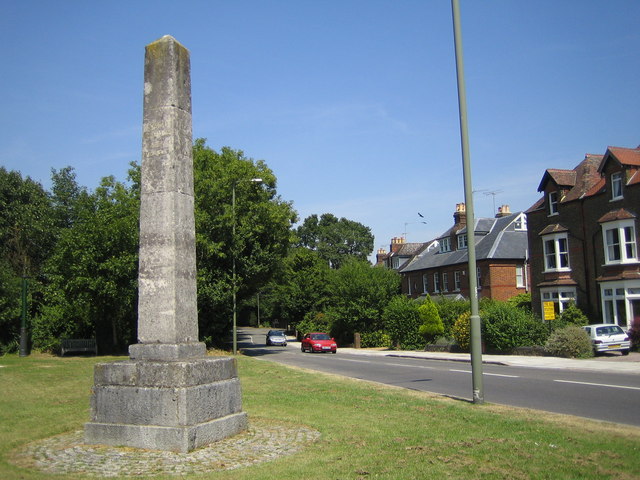
1471: Battle of Tewkesbury
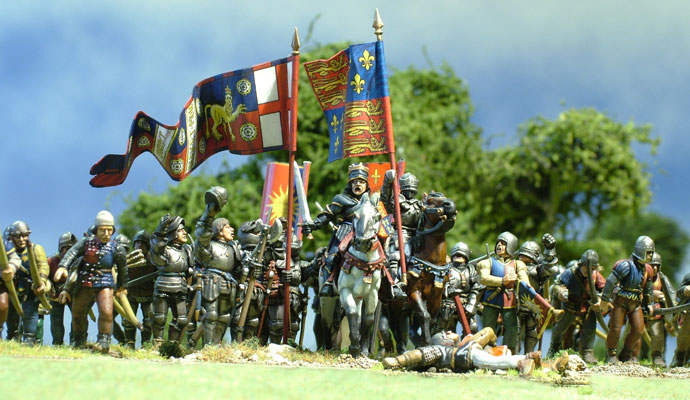
1485: Battle of Bosworth Fiel


1460: Ba ttle of Northampton

1460: battle of wakefield

1471: Battle of Barnet

1471: Battle of Tewkesbury

1485: Battle of Bosworth Fiel

Subscribe to:
Comments (Atom)
